My entire discussion uses AVERAGE velocity NOT muzzle velocity.
You need AVERAGE velocity to do the calculations.
My entire discussion uses AVERAGE velocity NOT muzzle velocity.
You need AVERAGE velocity to do the calculations.
exactly, and from my point of view, the real shooter shot from the high roof behind the man who was shot dead on the low roof…
there is an unobstructed direct line of sight from the higher building and from the lower building…
I would not trust anything without my own verification. But that is NOT a reason to NOT seek the information and examine it when and if it arrives.
Repeating trivialities with which everyone in this discussion obviously already agrees — i.e. nobody trusts the FBI — doesn’t further the investigation, and wastes space here saying nothing.
Or put simply, rephrasing a famous Reagan line:
DON’T TRUST. AND VERIFY!
averaging out is very dangerous…
the average depth of a lake or pool can be very small but still many people die in such bodies of water…
Utterly irrelevant non-sequitur.
To calculate the amount of time over a known fixed distance, one needs the AVERAGE velocity. PERIOD.
the way this analysis should happen is with different groups who work independently from each other and who analyze a certain hypothesis.
which hypothesis does not matter, and one group should not prematurely nuke another group’s work.
intermediate checks are ok, but hindering another group’s progress should be forbidden.
the way you speak radiates bias, prejudice and cognitive dissonance…
I try to stick to independently verifiable facts…
that is how I know this information…
I simply provide the references and underlying supporting material immediately such that it can be analyzed by everybody.
I am looking to find out what happened that day.
I really doubt what you are after, because I only see misdirection and ridicule coming from your way…
I really do not have the slightest idea where you get your floor level values from, because if you look at the rally area, you will quickly realize that your values simply do not make the slightest sense.
as you are not much of a reader, I summarized it in a couple of images…
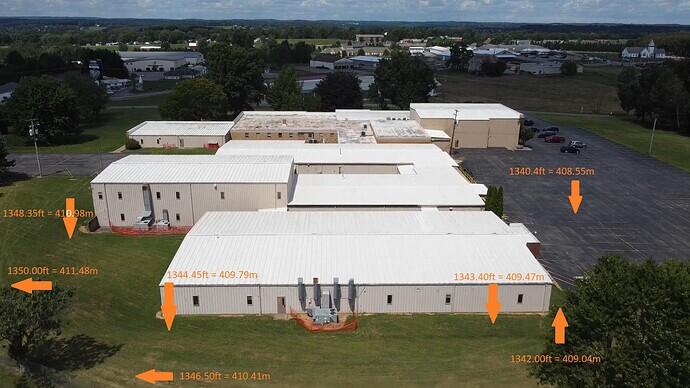
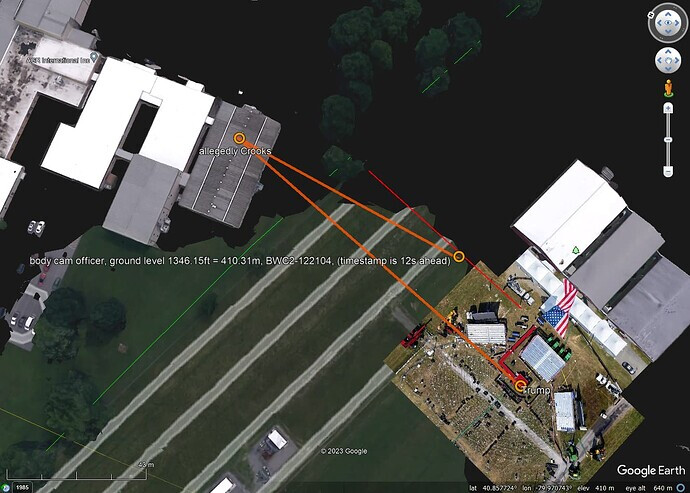
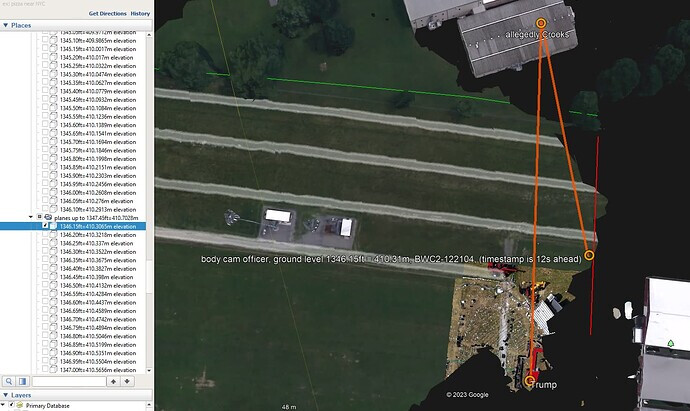
ps: for those who are not familiar with the term misdirection:
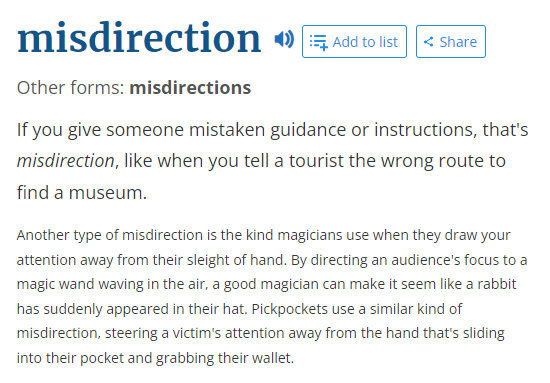
(source: https://www.vocabulary.com/dictionary/misdirection)
those who believe shots were fired from any of the vents: I feel sorry for you, but you have been misdirected… check out who sent everybody into believing that idea…
If you slow down the portion of the video where the object is sighted, it seems to have a sound of a drone… maybe you can do some audio analysis on it?
My calculations also use average velocity. I used the method Dr. Robert Maher used in the first part of this paper: https://www.montana.edu/rmaher/publications/maher_aes_1022_22.pdf
The point I was making in my original and subsequent replies to you is simply that the muzzle velocity implied to both your and my calculations (which use average velocities) is well within what would be expected from 5.56 rounds fired from a 16-inch barrel, and, by extension, the average velocity at the microphone is also within the expected range.
BOTTOM LINE
The average velocity of the bullet MUST be VERY close to, and certainly less than 1% more than 2622 fps.
Your result is FAR FAR FAR outside the range of possibility for a snik-report difference of 220 ms, a distance of 454 ft, a speed of sound of 1152 fps, and a distance from ear to mic of 1.07 ft.
a whistleblower is not to be trusted either…
I only go for audiovisual footage for which there are several matching recordings and that was made available as soon as possible after the event…
macro-level information that is corroborated by several sources is ok to trust if it was made available later (e.g., the video of James Copenhaver and the bodycam footage)
e.g., the phone of RealDjStew was confiscated for 3 days by the fast buriers of information.
they may as well inject some information too, e.g., a couple of drone like smudges, such that later on, people can discover “very fast flying military style drones”…
I only trust information that has been corroborated by several sources…
e.g., now with the bodycam footage: they first release the version without sound. a couple of days later comes the version with sound…
the strategy behind this is the following: people are much less interested in seeing something they have seen before, even if it comes with more audio…
I do not follow any news whatsoever, and I am (imho) one of the better informed people around ![]()
This dictionary entry needs to be amended: … And finally, in the eighties, there was as also the extraordinary case of some really malevolent people selling dictionaries to tourists with slightly mistranslated phrases like “Would you please show me the way to the station?” only to make fun of them. ![]()
in my model, the distance between the shooter and Trump’s microphone would have been 236.34 meters = 258.5 yards = 775.41 ft
my question is: what average or muzzle velocities would match your sound analyses for this distance?
the distance from the shooter on the high roof to RealDjStew would be around 450 ft, and to the witnesses near the trees would be around 480 ft…
next time he posts something, he will learn that what he does is called the judas goat method ![]()
Pretty sure that sound is the officer warning the crowd away.
Which is weird when one considers that shooter is most likely after DJT.
I’m not sure what your issue is. The equation I linked to gives an average velocity range from 2589 to 2638 fps at 454 feet. 2622fps is within that range. If I use your precise figure for speed of sound, instead of a range, it gives 2608fps, which is like 0.5% off from yours. How is that “FAR FAR FAR” outside the range of possibility?
Again, my point: even using your average velocity (which I admitted in my first post would be more precise than mine), that is within the range expected from a 5.56 fired from a 16-inch barrel AR-15.
Then you are talking about something TOTALLY DIFFERENT.
As my post stream began and has repeatedly stated, I am referring to the microphone into which Trump was speaking.
That is 454 ft from the shooter.
The video I used is the MAIN FEED. I included it in my first post. And I showed the 220 ms MEASUREMENT of snik-report difference on the 1st shot.
I think the 1st fire start at 18:11:46 in the camera time on top. The women in white is at red circle.
Look at this reference: Video - Dropbox
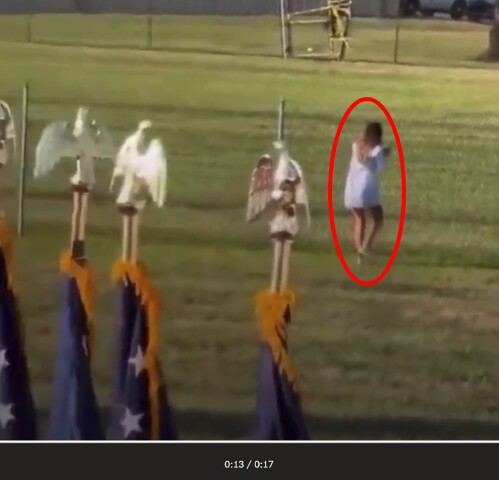
The policemen react by turning his head at that exact time and hides behind the truck.
yes, that could well be, I found a video on rumble that confirms it…
Two-Shooter Audio Analysis
In my last post, I dismissed the Cruiser dashcam audio because it recorded the primary response of all eight shot reports essentially identically, even to the point of having echoes from the preceding shots disappeared and “written over.” To further back that up, I will show responses from other, more reliable audio sources so you can see how different the eight shot waveforms truly are. These sources were not totally stationary, BUT, they do appear relatively stationary during the last five shots, and the L/R stereo microphones seems to have extremely similar responses in each case, which says there was probably no “thumb” recorded and these are good recordings. Further, there are large acoustic signature changes between shot group 1 (1-3) and shot group 2 (4-8), in all the recordings that didn’t spend a month in police custody.
For the tl;dr crowd, the resonant spectral peaks of reports 1-3 differ substantially from the resonant spectral peaks of shots 4-8, as well as the spectral distribution generally. By my measurements of first pressure wave arriving from the boom (which I believe to be very accurate), the first shooter was somewhere generally along the shot line of the patsy, but a different gun and a different location.
For those interested in details, first, let’s look at the timing results, and then we can see how we got there. I calculated differential arrival times from the podium arrival times of the booms for source 2 (got a gun), source 3 (TMZ), and source 6 (DStew). I time-aligned these audio sources at shot 4. Why? I had to choose somewhere, and this was a clean choice, and we believe it was likely from Shooter 2 (Patsy) so we know its location. The purple dots in the plot are the podium reference. If all 8 shots came from the same location, and the sources never moved, all we would see are the purple dots as all the sources would have the same time delays and their dots would be occluded by purple dots.
This is almost exactly true for shots 4-8. All sources agree almost perfectly to less than a foot (with two one-foot variations) for these five shots.
For shots 1-3, NONE of the sources agree on the report spacings with the podium. Variations of up to almost 20 feet exist in arrival times (at the speed of sound) from what would be expected from the podium report spacings, if the patsy took all the shots. Note this doesn’t say where the shots were taken from, it just notes the discrepancies.
This COULD be due to the patsy taking the first three shots also, if sources 2 and 6 moved away from the shooter from the time of shot 1 to the time of shot 4, then stopped moving, and source 3 was slightly attracted towards the shooter. But this 18-19 foot delta pattern doesn’t seem that way to me. DStew was moving mostly sideways and not really changing his distance away from Crooks that much. Source 2 couldn’t really move away directly from Crooks, a fence was in the way. Sure, part of this could be them moving some, but not 20 feet. I think the times are reliable, but the microphones had feet until shot 4, so that could be part of the answer.
So now, let’s look at the source 3 TMZ audio to see if we can convince ourselves we have a single firearm. I have cut out and aligned all eight shots in the figure below. I have also noted to the right of each the peak “ring” frequency of the first 15 ms or so of each shot. The first three shots ring at 438-440 Hz, with quite a lot of energy at frequencies lower than that. The last five shots ring at a peak of 485-519 Hz, and have much less energy at lower frequencies. Also look at the red and green vertical lines and note how they hit the first two pressure peaks of the reports for the first three shots, but the second peak is well inside the green line for the last five shots (meaning a higher frequency, probably a shorter gun barrel and/or a different close resonant surface). Lastly, I will note that shot 3 is hard to pick out visually here as there is a high-pitched scream competing with it in the waveform—spectrally they are quite separable.
Anyway, I say this signature means: 1) two different guns (different resonances); 2) two different distances (different spacings from the podium); 3) demonstrates that the dash cam audio with no audio variability is BS.
Now let’s look at the shots aligned for source 2 by the fence. These are hard to align because a) there are loud supersonic cracks/reflections stepping on the beginning portions of booms, and b) they are all different to some extent. The high-frequency squiggles are the cracks—I am not trying to align those. I am trying to align the lower-frequency pressure peaks between the neighboring shots, and I do get perfect agreement with the podium for shots 4-8.
The yellow line passes through the first “boom” pressure peak for each shot (a few of these are hardly visible). The green line passes through the second “boom” pressure peak for the last five shots—basically invisible in shots 4 and 5. The red line passes through the second “boom” pressure peak in shots 1-3—you can see how broad this peak is and how nothing matches it in the last five shots. The blue, purple, and brown lines pass through other pressure peaks used to confirm alignment for shots 4-8.
These alignments are at the msec level—if shifted enough for shots 1-3 to agree with the podium for the one-shooter theory, that is about half the visible graph and nothing aligns with anything. Something is substantially different here between the two shot groups, and it isn’t just the phone moving a few feet.
I won’t show the DStew plots here. The supersonic crack/reflections are LOUD on all of these and stomp all over the boom with a 9 kHz peak that sounds like breaking glass. Underneath that, however, the first three shots have a prominent low-frequency peak at 546, 531, and 528 Hz, respectively. For the last five shots, the low-frequency peak occurs at 376, 351, 367, 360, and 354 Hz. NOT the same gun (unless recorded in a cop car and released three weeks later). BTW, shots 9 and 10 both have extremely low frequencies (highest below 200 Hz).
Also, at Trump’s mike, shots 1-3 peak at 494, 477, and 475 Hz. Shots 4-8 peak at 544, 528, 532, 528, and 532 Hz, with extremely strong second and third harmonics.
To summarize, at four dispersed locations, the signatures of shots 1-3 and 4-8 show two different guns, a stationary firing position for shots 4-8, and a different TBD firing position for shots 1-3.
Hi howdoiknowthisinfo,
You might have noticed on the drawing below, that we have a reference on each point of interest. All you must do is ask me for the ref. no and I will be glad to provide it to you. So, you want to know the source of the floor levels which are ref 921, ref 386 and ref 691. They have been provided by Land ID in form of a Topographical KML map. See below reference document.
May I ask you which source you are using for your floor levels?